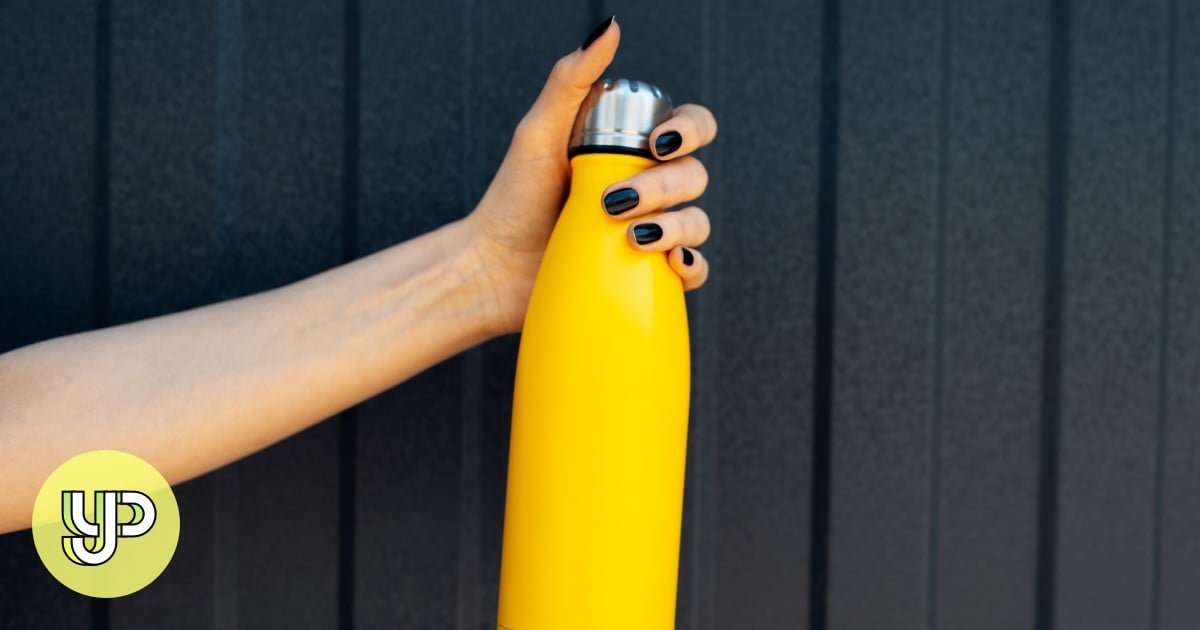
1. According to the podcast, what helps regulate water?
A. Heart rate
B. Blood pressure
Temperature C
D. Blood circulation
2. What word can replace "faithful" in the podcast?
A. credible
B. rustic
C. sure
D. reliable
3. What does UFC mean?
A. colony-forming units
B. Mushroom units populated
C. Cell formation units
D. Colony fungal units
4. How many CFU bacteria were found in a faucet?
A. less than 30,000
B. exactly 3 million
C. around 30 million
D. almost 300 million
5. On average, how many CFU bacteria were found on reusable water bottles?
A.40
B.280
Around 40,000
D. 20.8 million
6. Which type of water bottle had the least bacteria?
A. Jars with soft lids
B. Bottles with spouts
C. Bottles with screw caps
D. They all contained the same amount of bacteria.
7. What percentage of Americans wash their water bottles only a few times a week?
A. less than 10 percent
B. about 25 percent
C. just over 50 percent
D. up to 75 percent
8. What do "everyday objects" refer to in the podcast?
A. reusable water bottles
B. Disposable water bottles
C. Toilet seats
D. Faucets in public restrooms
9. If something is "alarming" then it is...
A. makes someone feel calmer.
B. surprise someone.
C. causes fear and worry.
D. causes excitement.
10. What did Dr. According to the podcast, Jay Vornhagen found out during his research?
A. There are only two types of bacteria found in water bottles.
B. Some bacteria in water bottles can make us sick.
C. Most bacteria in water bottles are harmless.
D. Two types of bacteria found in water bottles are good for our health.
11. Complete the following summary with information from the podcast.
To keep your water bottle clean, you should (i) ______ wash it. You can use soap and water or sometimes even ( ii) _____ . Make sure you dry it completely after washing. Once a week, disassemble your water bottle and (iii) _______ with a brush to clean it of dirt, or (iv) _______.
Answer
1.C
2.D
3. one
4.C
5.D
6. one
7.B
8. one
9.C
10.B
11. (i) every day; (ii) vinegar; (iii) exfoliation; (iv) Germs
script
Adapted from Tribune News Service
Voice 1: It is well known that adequate hydration is essential for your body to function properly. Water doesn't just quench your thirst: it regulates temperature, eliminates toxins, keeps joints flexible and stimulates important functions such as nutrient supply. But you may not know that your trusty water bottle could be full of germs.
Voice 2: A 2022 study found that the average reusable water bottle harbors more bacteria than a toilet seat. The researchers measured the amount of live bacteria in these vials. On average, the bottles contained 20.8 million CFU, which is the equivalent of colony-forming bacterial units, 40,000 times more than in a toilet seat.
Voice 1: The type of bottle also made a difference. Screw top bottles contained the lowest amount of bacteria at just 3 million CFU, while spout or screw top bottles contained up to 30 million CFU, a similar number to that found in a faucet.
Voice 2: The study also found that of the 1,000 Americans surveyed, a quarter washed their water bottles several times a week, and just over 10% only cleaned them a few times a month. These alarming statistics highlight how important it is to properly clean and care for these everyday items.
Voice 1: Dr. Jay Vornhagen, an assistant professor at Indiana University School of Medicine, said water bottles can make you sick if you don't clean them properly. Their research found several bacteria on water bottles, including potentially harmful bacteria such as staph and coliform bacteria.
Voice 2: To prevent your water bottle from becoming a breeding ground for germs, experts recommend rinsing it daily with soap and water or sometimes white vinegar and then drying it well. Once a week, clean it thoroughly by taking it apart and scrubbing it with a bottle brush until you reach the sensitive areas. Your water bottle goes with you everywhere. You can protect your health with a regular cleaning routine.
Aucun commentaire:
Enregistrer un commentaire